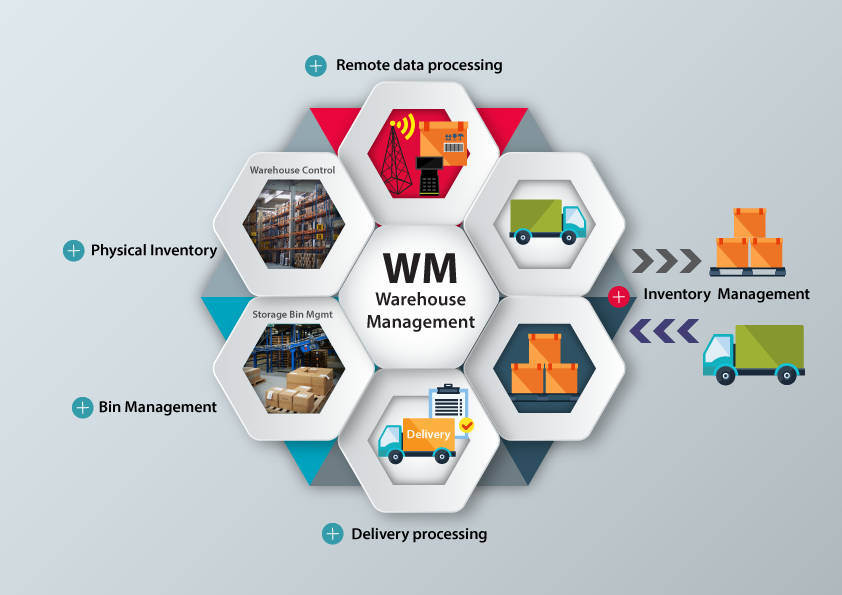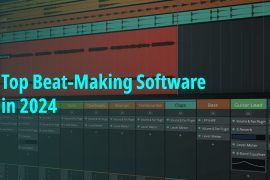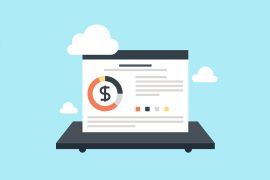In the current digital era, mobile phones and smart devices have surpassed the human population on earth. The main focus is innovation and making user interfaces as engaging as possible.
It’s not a coincidence that we are hooked to our mobile screens for hours without batting an eye, it’s the frontend services that are ruling the game. Similarly, there are backend services as well that regulates the software architecture, database administration, and integration features.
As the name says, Mobile backend as a service(MBaaS software) eases the development of backend services via customizable application programming interfaces(APIs) and software development kits(SDKs), thus, circumventing the development procedure and expediting the process of launching an app or software in the market.
Table of Contents
Utility of MBaas Software

Whenever an app is developed from scratch, a developer needs to do a lot of coding, backend server setup, scaling the infrastructure, security configurations, and integration with external services. MBaaS software automates all this process and relieves the companies for outsourcing engineers and highly-paid developers.
Here is a list of various utilizations of MBaaS that make it relevant to SMBs, enterprises, and to anyone planning to develop an application.
- Infrastructure management: MBaaS streamlines the server infrastructure development. Unlike the traditional method where one needs to start from level zero and invest time and codes in driving data and building a proprietary system, MBaaS takes the responsibility to build it for the developer with accuracy, as specified.
It manages the software licensing, usage tracking, and configurations needed to run the backend facilities efficiently.
- Security considerations: MBaaS leverages privacy and offers omni-auth access token surveillance for enterprise security. The platform has many OmniAuth Capability features like OAuth, AD, LDAP, SAML 2.0, etc.
- Focused development of frontend: With less worry about the backend server setup development, developers can be fully dedicated towards frontend because that is the most important segment of marketing a mobile application, maintaining users till the end of checkout, and increasing business growth.
- Scalability: For businesses running on tight budgets, MBaaS offers resources of all sizes, enabling scalability whenever required. It automates up-gradation without involving server-side complexities.
With features like Application Cloud Enablement(ACE) and Content Delivery Network(CDN), it becomes easier for the applications to deliver dynamic content to the user as per his request in a matter of seconds.
- Cost-effective: As it can be understood, MBaaS software downsizes the code and thus, the time needed for the development of backend infrastructure, simultaneously eliminating the need of hiring a special backend developer. This lets the SMBs and enterprises invest in user interaction interfaces, the predominant predictor of successful audience engagement.
- Mobile analytics: MBaaS offers Services analytics and mobile API analytics that track user behavior and provide insights about customer-app interaction such as page views, unusual withdrawals, and incomplete checkouts. This provides instant feedback required for the improvement of the channel for accelerating the lagging ROI. It also supports supplementary plug-ins to use third-party analytics-related tools.
- Mobile support services: Simplifies backend server setup and easy integration with mobile support services like push notification, messages, email notifications, IoT services, geolocation services, converging the social media platforms to the application interfaces, and API management. This enhances cross-channel interaction, a golden chance to boost engagement.
MBaaS platforms
Today, we have a plethora of MBaaS platforms that are providing doo-delivery of backend infrastructure. However, it is important to choose the best as per requirement and budget. Some important aspects to look for in an appropriate MBaaS platform are technical support, security measures, data management property, and supporting APIs.
Here is a list of the best MBaaS platforms that are revolutionizing the backend infrastructure development and management for businesses of all sizes.
Known for its serverless AWS backend, Amplify is a command-line interface with a huge library of user-interface components. It was founded in 2017 and currently caters to Orangetheory, HyperTrack, and Branch.
Some of its exclusive features are listed below:
- Development of full-stack applications with high well-defined protocols for building a robust backend, data storage, and visually appealing front end. It assures security and reliability.
- Allows development of single-page web apps, static websites, and other forms of apps in very little time and cumbersome process.
- Reduces the code required to merge mobile and web applications to AWS services via AWS libraries and studio.
- Attributes of AWS libraries include customer account sign-ins, push notifications, data maps, AI/ML-based features for text translation, speech interpretation, two-factor authentication, and image recognition for both android and iOS platforms.
AWS Amplify is usually recommended for large-scale projects. The platform is also known for its friendly pricing plan that includes AWS free tier(12-month free trial), pay-as-you-go model along pay less by using more systems.
Firebase is Google’s flagship platform for both web and mobile application development. It was initially Envolve, an online service integration platform, launched in 2011. Gradually, the founders realized its potential to develop real-time coordinated applications and launched it as a full-fledged MBaaS platform in 2014, then acquired by Google in the same year.
It is best for MVPS and single-function applications. Some of its exclusive features are listed below:
- Backend infrastructure development tools and hostings such as Cloud Firestore and Authentication.
- Allows building customized algorithms with Firebase ML kit.
- Performance tracking with Crashlytics and Google Analytics.
- Empowers analytics with A/B testing with Rich Config and cloud messaging.
- Offers tons of homegrown extensions to extend functionalities. Some of them are Stream Collections to BigQuery, Resize Image, and Trigger Email. Third-party extensions such as Stripe and MailChimp are also available.
Besides a web development platform, Firebase has an active community of learners and developers. It is said to be an expensive tool as compared to AWS Amplify.
Progress Kinvey is another serverless cloud platform, mainly used exclusively for the development of progressive web applications and also browser-based and mobile applications on all kinds of platforms including android and iOS.
It is differentiated from other MBaaS software platforms for its remarkable microservice in the field of healthcare, insurance, and manufacturing. Some other services provided by it are IoT integration, empowering UX/UI, and identity authentication.
It was acquired by a US-based software company named Progress Services but remains to maintain its singularity without any mergers. The pricing models are convenient to large enterprises as well as individual developers.
An exclusive MBaaS platform launched by Apple as a part of the iOS 8 updates. It is appreciated for its zero licensing fees and network stability.
Some of its services are data management and security, push notifications, database administration, or public and private front, and robust memory services (1 PB, 10TB, 200TB)along with file sharing facilities.
Though Cloudkit is limited only to iOS developers, it currently has 10,000,000 active users. It is available for the users of iOS, watchOS, tvOS, and macOS.
Based on the iconic Parse platform, Back4App is a low-code backend service for mobile app development. It is distinguished for its advanced CLI tool that fosters efficient migration of an app from a Parse-based system to Back4App.
It is one of the most versatile MBaaS software platforms with multiple modalities like Android Studio, React Native, Javascript, GraphQL. Its solutions are famous for developer-friendly tools like spreadsheet-like data sheets that ease uploading and syncing data from multiple resources to one basepoint.
Similar to other MBaaS platforms, it also offers APIs for backend server setup, social network integration, storage, email automation, and push notification. It also offers a choice between single or multiple hosting servers.
Currently, Back4App supports 55 million users globally and has acclaimed $500k savings for the VantageBP startup. Leading companies like Accenture and EL Pais recommend it as the best MBaaS platform.
Conclusion
MBaaS software platforms leverage supreme, cross-platform facilities excluding the complex coding required to implement it. It has empowered interaction between companies and customers.
Currently, the MBaaS market values $2 billion and is foreseen to grow to $6 billion in the next 5 years at a CAGR of 23.9%
If you are looking for more information regarding various kinds of MBaaS, software, go through SaaSworthy’s blog on the Mobile Backend as a Service (MBaaS) – SaaSworthy.






